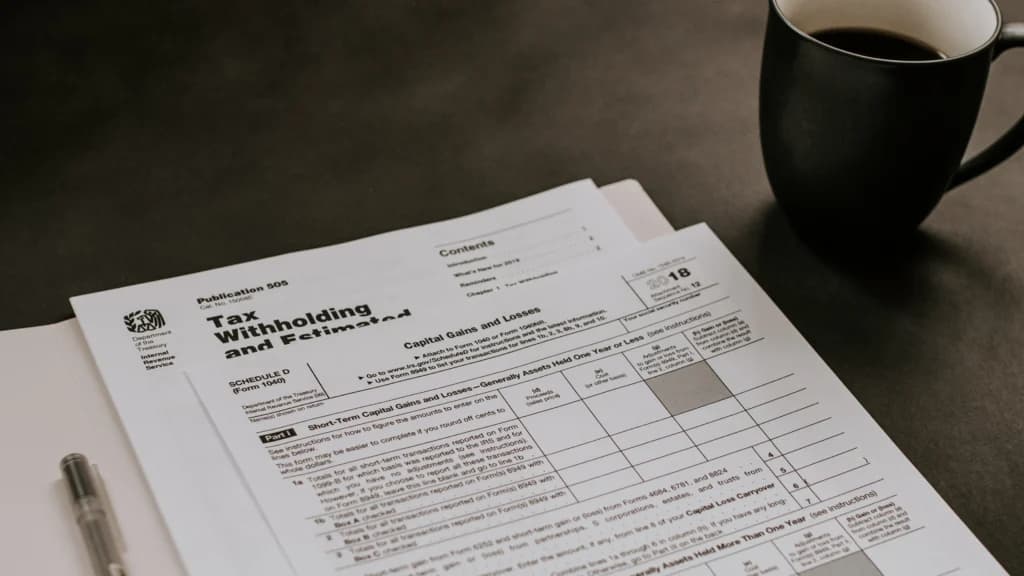
It’s never been easier for you to save on your federal income taxes. Here’s what to know about the U.S. federal solar tax credit.
The federal solar investment tax credit (ITC) helps homeowners and businesses adopt solar energy by lowering installation costs and boosting long-term energy savings.
By claiming the federal solar tax credit, you can:
- Lower the overall cost of your solar installation
- Support renewable energy growth in your community and state
- Qualify for incentives whether you own residential or commercial property
Learn how federal solar tax credits work and how to use them to save on your taxes this year.
In this article:
- Solar tax credits under attack
- Understanding solar tax credits
- How solar tax credits work
- Financial benefits of solar tax credits
- Common misconceptions
- Frequently asked questions
Solar tax credits under attack
Before we get started, it’s important to note that — thanks to the passing of the OBBB — the Residential Clean Energy Credit will end on 12/31/2025. This is the part that allows homeowners to claim 30% of the cost of their solar install as a deduction on their taxes.
There are a lot of details to consider, but if you want to take advantage of the credit, now is the time to act. See here for more information.
Understanding solar tax credits
The federal solar tax credit is designed to reduce the financial burden of installing solar energy systems. Thanks to the Inflation Reduction Act of 2022, two of the primary tax credits are currently available to U.S. homeowners and business owners (note that the policy is always changing):
Many states and local governments also offer tax credits and rebates to lower installation costs further. Check DSIRE (dsireusa.org) or your utility’s “Rebates” page to find local offers.
What is a solar tax credit?
A solar tax credit lets you claim a percentage of your solar installation costs on your tax return. This credit directly lowers the federal or state taxes you owe.
These tax credits help property owners save money by reducing upfront solar costs.
Importance of solar tax credits
By cutting down the initial expense of getting solar panels, solar tax credits make it easier for homeowners and businesses to tap into all the other great long-term benefits of going solar. Key benefits include:
- Lower Monthly Energy Costs: Using solar power for the home lowers electricity bills and makes monthly costs more predictable.
- Positive Environmental Impact: Solar energy reduces carbon emissions, helping the planet and future generations.
- Higher Property Value: Homes with solar installations typically see a 4.1% increase in resale value, according to a Zillow 2019 study.
Environmental regulations
How you’re credited for any extra power you send back to the grid works differently depending on your state’s net metering policy. Net metering essentially provides credits to homeowners for excess solar power generated and sent back to the grid, but the billing rates vary between states. Knowing your state’s energy market can help you get the best solar tax credits and installation plan.

How solar tax credits work
To qualify for solar tax credits, a homeowner or property owner usually has to own the solar system — either by paying for it upfront or getting a loan. Third-party ownership options, like power purchase agreements (PPA) and solar leases do not typically qualify for tax credit eligibility. But, the company that owns the system claims the credit, helping make it a more affordable option for you.
So, before you install, make sure you’re clear on whether you qualify, and then simply report it when you file your taxes and claim your refund. You can even carry it over two years if your rebate is higher than your tax burden.
Eligibility Requirements
Both types of federal solar energy credits have different eligibility requirements. However, the common requirements between both types are that:
- You must purchase the panels: Only homeowners who buy their system, with cash or through a loan, can claim the tax credit. The tax credit for leased or PPA systems goes to the organization that owns the system.
- The system is new or recently installed: The solar installation must be new and placed in service after a specific date set by the IRS.
- The 30% credit applies to solar systems placed in service from January 1, 2022 through December 31, 2025, and to home-efficiency upgrades installed from January 1, 2023 through December 31, 2032.
- You own an eligible property type: The credit covers homes, commercial buildings, and some rental properties with owner approval.
For the latest eligibility updates, visit the official IRS pages for the Energy Efficient Home Improvement Credit and the Residential Clean Energy Credit.
Types of solar tax credits
There are many types of solar tax credits available at the federal, state and local levels.
| Tax Credit | Level | Benefits |
| Energy Efficient Home Improvement Credit | Federal | 30% credit on qualifying home-efficiency upgrades (primary residence only) |
| Residential Clean Energy Credit | Federal | 30% credit on qualifying solar and other clean-energy systems placed in service 2022–2032 (primary & secondary residences) |
| Solar Renewable Energy Certificates (SRECs) | Local | Cash payments for each 1 MWh your system generates (market-driven, not a rebate)Availability depends on locationSeparate from tax credits |
| State Tax Credits and Rebates | State | Rebate payments for solar system installation Reduced tax liability for the tax year granted |
Financial benefits of solar tax credits
So, we’ve seen that investing in solar panels isn’t just good for the environment — it’s a smart financial move, too. The federal solar tax credit lowers solar installation costs, making renewable energy more affordable. It also cuts electricity bills, potentially saving you thousands over time.
In this section we’ll dive into the savings a little further, looking at some example costs to illustrate the actual savings homeowners can see.
Reduction in solar installation costs
As we saw above, the federal solar tax credit can significantly reduce the initial installation cost of solar panels.
For example, if a solar energy system costs $20,000, a 30% tax credit could lower the net cost by $6,000 (e.g., a $20,000 system = $6,000 credit), making the total out-of-pocket expense $14,000.
Here’s a comparison:
| Installation Cost | Federal Tax Credit (30%) | Final Cost After Credit |
|---|---|---|
| $10,000 | $3,000 | $7,000 |
| $20,000 | $6,000 | $14,000 |
| $30,000 | $9,000 | $21,000 |
Long-term savings on energy bills
Solar panels lower monthly electricity bills by generating free energy from the sun. To estimate your savings, compare your system’s annual output to your average monthly bill. A household with a $150 monthly bill could save $1,800 yearly and over $45,000 in 25 years, depending on energy usage, location, inflation and rates.
During high-demand seasons, like when air conditioners and water heaters run often, solar panels reduce grid reliance and keep energy costs steady.
Return on investment
Solar energy systems provide a solid return on investment through tax credits, lower energy bills, and higher property value. Homeowners typically recover their costs in 7-10 years with a 10-12% annual ROI, depending on state policies and incentives.
Businesses also gain tax savings, reducing installation costs and boosting long-term profits by lowering operating expenses.

Common misconceptions
Despite its growing popularity, many myths about the federal solar tax credit persist. Let’s clear up some of the most common misunderstandings:
Myths about solar tax credits
Myth: It’s difficult to claim solar tax credits.
Fact: The Residential Clean Energy Tax Credit process is extremely simple, with step-by-step guidance on the IRS website.
Myth: The tax credit only applies to new homes.
Fact: Solar panels installed on existing homes also qualify for the federal tax credit.
Myth: You must pay cash for solar panels to claim the tax credit.
Fact: You can finance your solar system through loans and still claim the credit.
Myth: Only homeowners can claim the tax credit.
Fact: Businesses and commercial property owners are also eligible. Non-profit organizations are eligible to receive the Federal Investment Tax Credit as a direct payment.
Myth: Solar isn’t worth it without the federal investment tax credit.
Fact: While the 30% investment tax credit certainly helps, third-party ownership options (leases and power-purchase agreements) still qualify for the tax credit after December 31, 2025. Also, depending on how much a system costs, the terms of a loan, your state, the size of your system, whether you pay in cash, and many other factors, purchasing solar may still make financial sense. An experienced installer can walk you through your options.
If you are looking for qualified professionals in your area, you can connect with multiple vetted solar installers through Aurora Solar to compare options and view upfront estimates on installation costs and energy bill savings.
Clarification on eligibility and usage
To claim the federal solar tax credit, you must own the solar energy system and have it installed on an eligible property. This includes primary residences, secondary homes, and some rental properties (with owner approval). The credit cannot be applied to leased systems or properties where the solar installation is part of a PPA.
Understanding the federal solar tax credit helps you save on solar installation, lower your electric bill, and support renewable energy.
Frequently asked questions
What is a tax credit?
A tax credit directly reduces the federal income tax you owe, offering a dollar-for-dollar reduction on your tax bill. It’s more valuable than a tax deduction, which only lowers taxable income.
What is the federal solar tax credit?
The federal solar tax credit lets homeowners deduct part of their solar installation costs from their taxes, making solar energy more affordable.
Am I eligible to claim the federal solar tax credit?
You qualify if you own the solar system and have it installed on an eligible property like your home, vacation house, or business in the U.S.
How do other incentives I receive affect the federal tax credit?
State, local and utility rebates can lower your federal tax credit amount, but performance-based incentives and renewable energy certificates usually don’t affect it.
What expenses are included?
Eligible expenses include solar panels, inverters, wiring, labor, permits and installation costs. As of 2023, standalone batteries are eligible for a tax credit.

